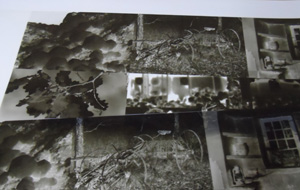
The main rule concerning the photographic negatives is that should have a well-balanced contrast, of a density situated 1,00 and 1,10. This value is identical for all the negatives, that they are realized argentic or digital ink jet.

From attention carried to the preparation of the photographic negatives depends the final result. The realization of well balanced digital negatives will be facilitated if your working chain is calibrated. In the absence of measuring device (densitomètre), let us say that a negative photo which will suit for an edition on argentic paper with average contrast without correction, will also applicable for the phototypie. It will nevertheless be necessary, to rationalize the work, to use a densitomètre. Besides, the phototypeur has to worry about the reversal of its pictures to don’t have image printed back to front. The side emulsion, or side printed for negatives ink jet, is in touch with the photosensitive gelatin during the sunstroke.
If the negative does not present enough oppositions marked between the black parts and the white parts, it is too translucent and would not protect effectively the gelatin of the action of the light in the whites of the test, which would give veiled and grey tests. This kind of negatives is to be rejected.
In contrast, if the sky lives without detail, as long it is black, if the halftones are confused with the lights, and if its clear parts are too transparent and without detail, it will offer only hard, too much contrasted tests. This kind of negatives also is to be pushed aside.
The good photographic negative so distinguishes itself : examined by transparency, or simply stand flat on a sheet of white paper, it will get loose clearly in all its parts. The pure whites will become the deep blacks to the edition ; grey of various nuances, the halftones; the translucent blacks, letting appear details, will become the clear parts of the test, the intense blacks will train the most blinding light.
We have to retain that generally, a soft negative is preferable in a strong negative.